Los Angeles Will Get a $100-million Open-air Museum Celebrating the Black Community This Fall — With 1.3 Miles of Art
The new public arts and culture corridor in Crenshaw, Los Angeles, will honor the largest Black community west of the Mississippi.
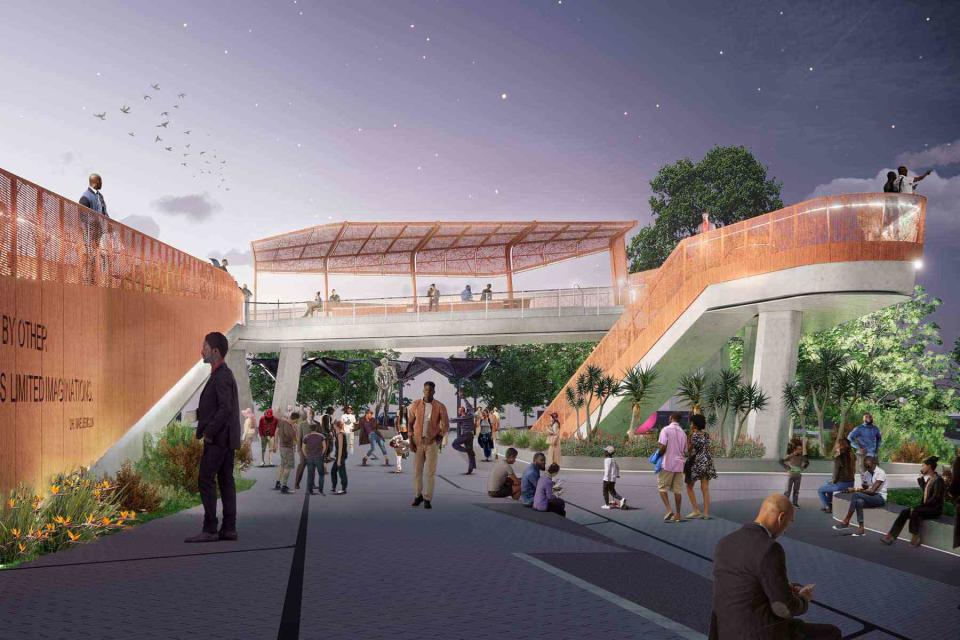
Rendering by Perkins & Will/Courtesy of Destination Crenshaw.
When residents in Los Angeles’ Crenshaw District learned a train line was going to be built in the heart of their neighborhood, there was concern about how it would impact the largest Black community west of the Mississippi.
But instead of just paving the Metro K Line right through the middle, the community — led by city councilmember Marqueece Harris-Dawson — came together to figure out how Crenshaw could benefit from the new train. Thus, Destination Crenshaw, a $100-million arts and culture corridor that runs for 1.3 miles on Crenshaw Boulevard, from Leimert Boulevard to 60th Street, was born.
“As Angelenos, we’re thrilled to celebrate the fact that Destination Crenshaw will be the largest public-private Black art program in the U.S. when it debuts later this fall,” Los Angeles Tourism president and CEO Adam Burke told Travel + Leisure. “Through authentic and visionary spaces, this ambitious project celebrates the past, present, and future of the Black and African American community, and visitors will have the opportunity to experience the neighborhood’s thriving arts and cultural scene while supporting one of the City’s most important economic development projects — all accessible via Metro’s new K Line.”
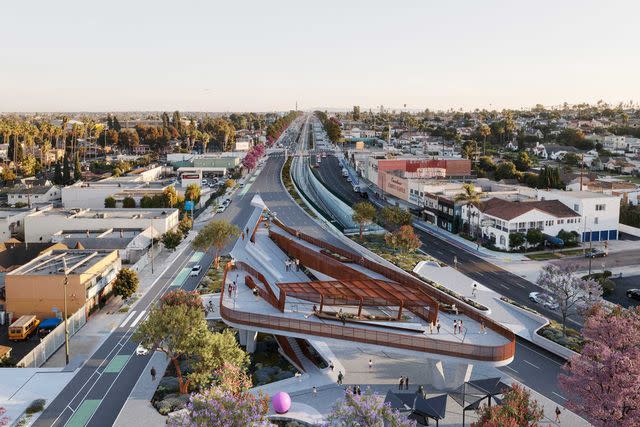
Rendering by Perkins & Will/Courtesy of Destination Crenshaw.
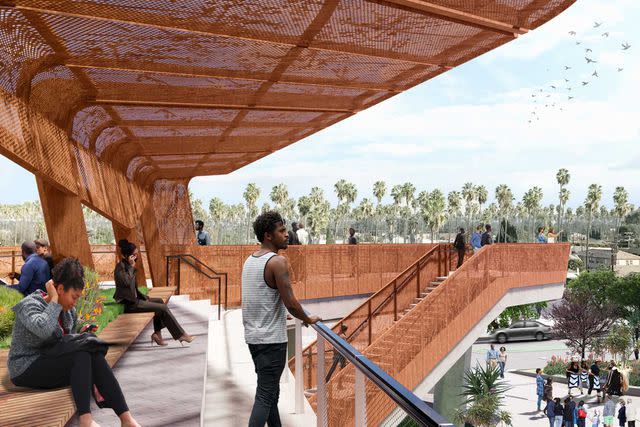
Rendering by Perkins & Will/Courtesy of Destination Crenshaw.
Construction on Destination Crenshaw started in 2020, and the first — and most significant — section is Sankofa Park, an elevated plaza with views of the neighborhood. It's slated to debut this fall at Crenshaw and Leimert boulevards.
“The art and design of Sankofa Park will provide cultural permanence for the Crenshaw community,” Destination Crenshaw president and COO Jason Foster told T+L, adding that he hopes the design will “spark a new aesthetic for Crenshaw's continued improvement.” The architecture of the park itself is in the shape of a sankofa bird, an African symbol “which flies toward the future while curving its neck around to view the past,” he added.
But the feature he’s looking forward to the most is Sankofa Park’s outdoor amphitheater. “I imagine our community coming together to see art programming by Black artists, concerts by Black musicians, and joining tours to learn more about the Destination Crenshaw artists that will have commissioned pieces in the Park,” Foster said. Among those permanent outdoor sculptures will be Charles Dickson’s Car Culture; Maren Hassinger’s An Object of Curiosity, Radiating Love; Artis Lane’s Emerging First Man; and a piece by Kehinde Wiley depicting a West African woman rising from the street.
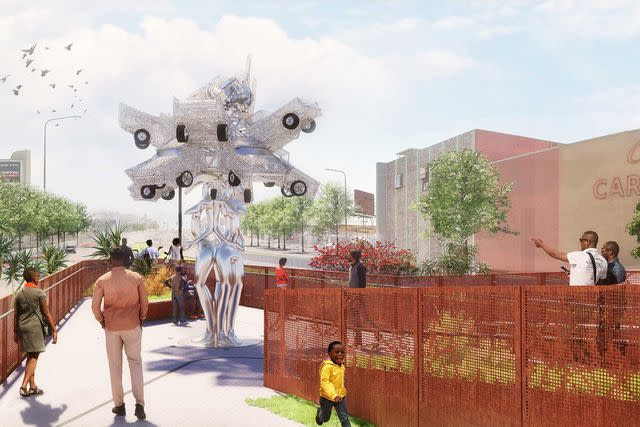
Rendering by Perkins & Will/Courtesy of Destination Crenshaw.
Besides showcasing public art, Destination Crenshaw will also “dramatically repair, revitalize, and sustain the Crenshaw Corridor, the most important commercial corridor in South Los Angeles and arguably the most important Black business corridor on the West Coast,” according to the previously mentioned release. It will also solve for “long-deferred infrastructure and safety improvements” by creating 10 pocket parks, including Sankofa Park, that are all connected via walkways and landscaping. Five of the parks will open in December and the last four in 2024.
When completed, Destination Crenshaw will feature more than 100 works of art from Black artists, as well as more than 30,000 square feet of sustainable landscape and 800 trees.
The overall theme of the project “Grow Where You’re Planted” was inspired by African Giant Star Grass — a species of grass used as bedding on Middle Passage ships transporting enslaved people that helped the diaspora survive wherever they were sent. It is now seen as a symbol of Black resilience.
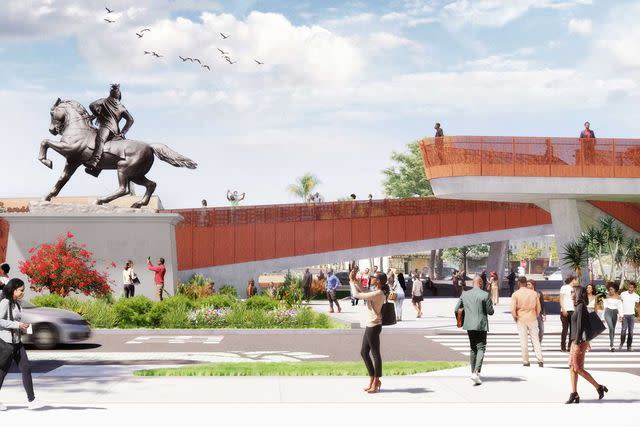
Rendering by Perkins & Will/Courtesy of Destination Crenshaw.
Behind the scenes, much of the work has also been led by the community. Many of the Perkins + Will architects who worked on Destination Crenshaw also helped design Washington, D.C.’s Smithsonian National Museum of African American History and Culture. An unprecedented 70 percent of the construction workers were also hired locally, and the area’s small businesses will receive help with improvements to their storefronts. After all, the hope of Destination Crenshaw isn’t just to preserve the destination but to uplift the community and draw in more visitors.
“We hope visitors come to Destination Crenshaw to learn more about the history of Black LA and its contributions to LA's story,” Foster said. “We also have lovely restaurants and businesses along Crenshaw to keep you here all day!”
For more Travel & Leisure news, make sure to sign up for our newsletter!
Read the original article on Travel & Leisure.

